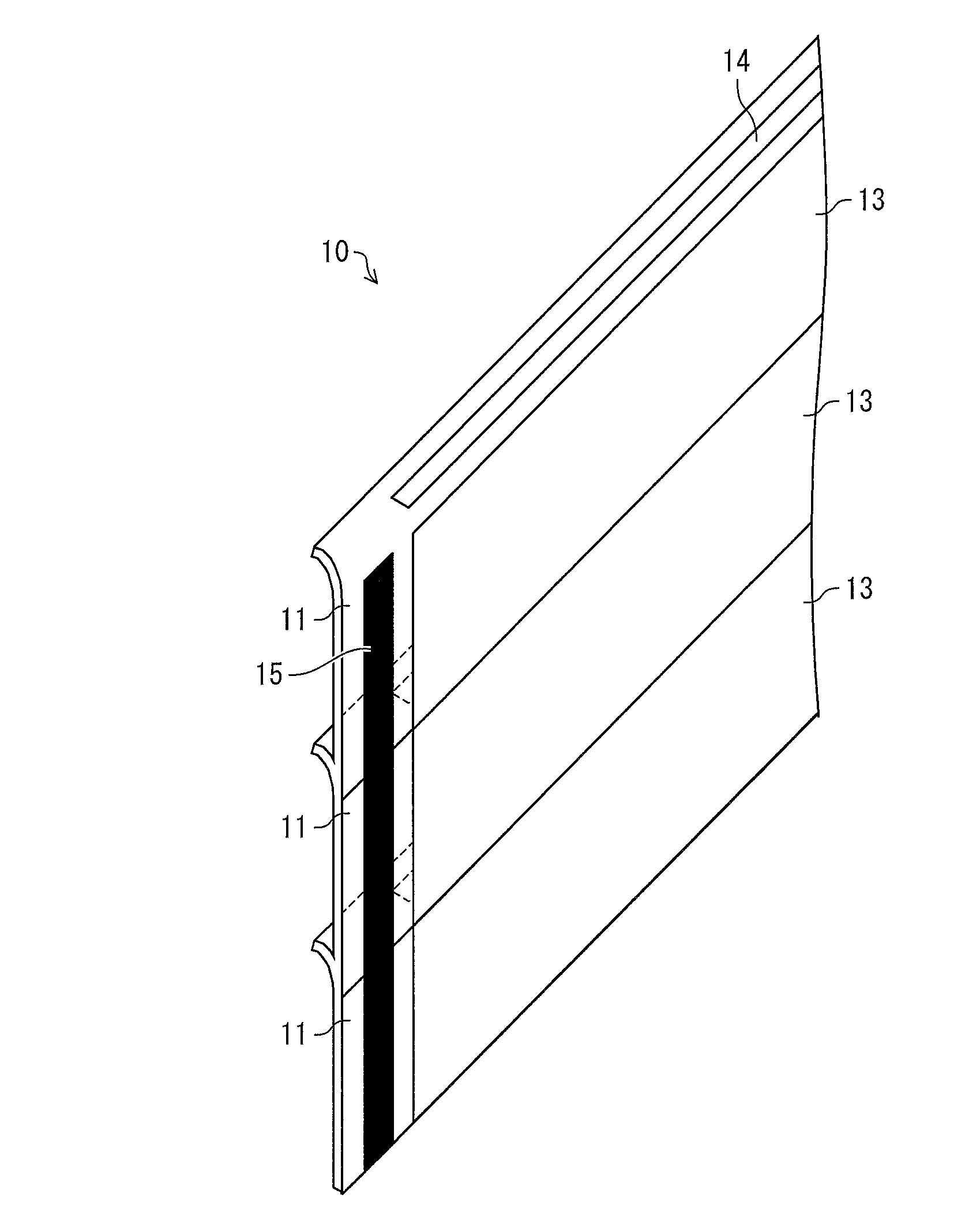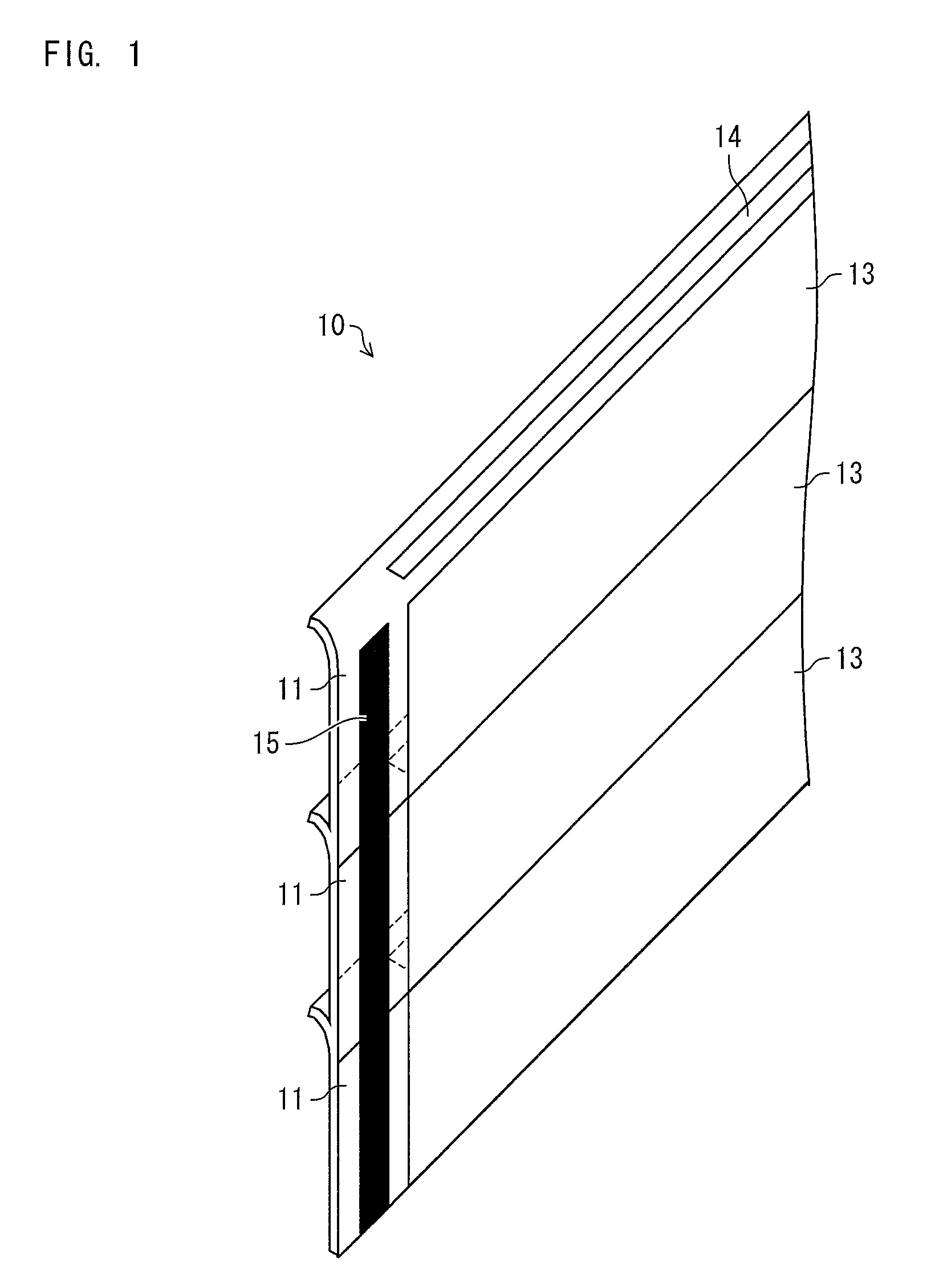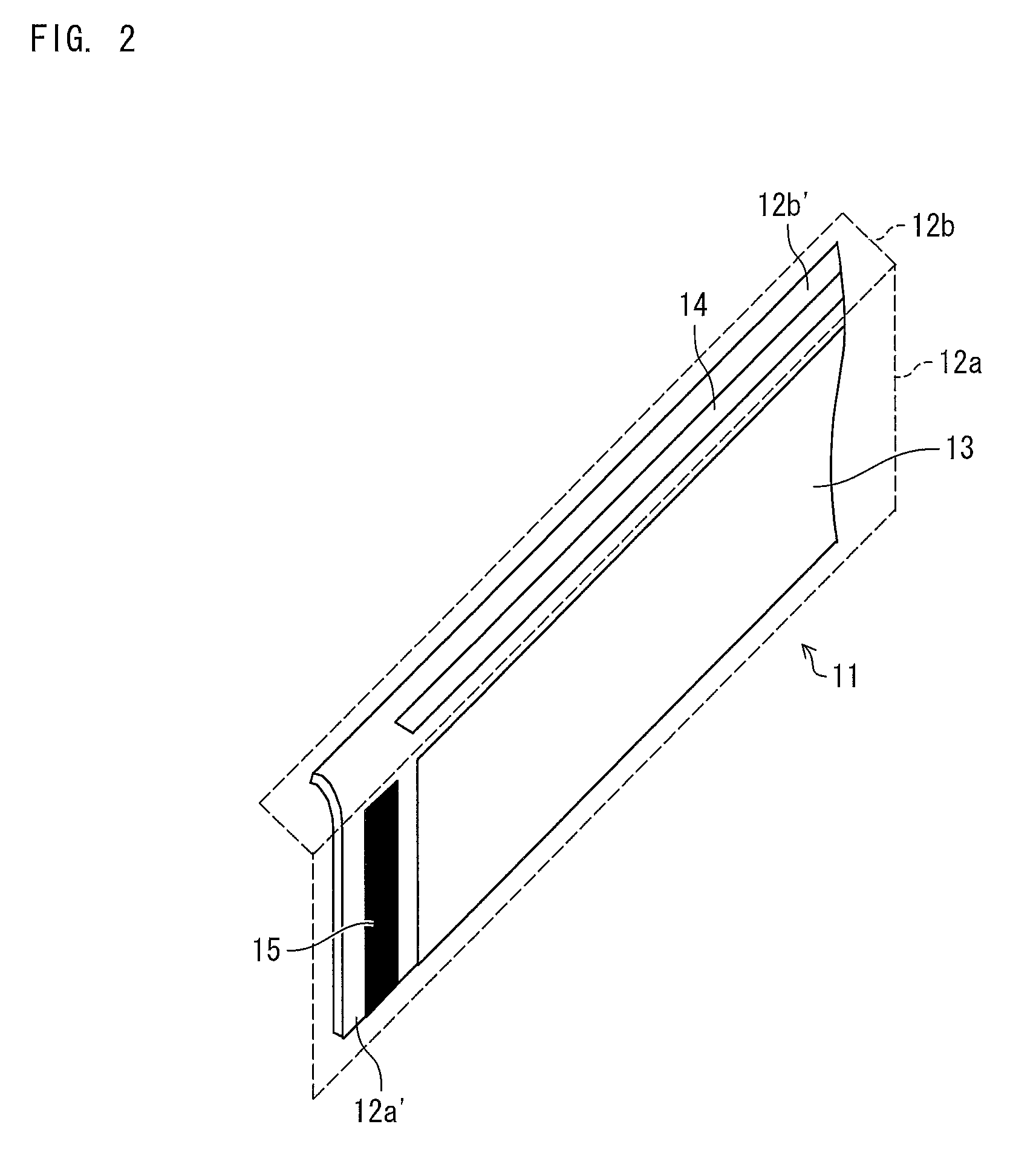Light emitting panel device wherein a plurality of panels respectively having light emitting sections are connected, and image display device and illuminating device provided with the light emitting panel device
a technology of light emitting panel and image display device, which is applied in the direction of solid-state devices, organic semiconductor devices, thermoelectric devices, etc., can solve the problems of low processing increase in the size of shadow mask, and low alignment accuracy of shadow mask, so as to achieve the effect of providing the image display device at low cost and low cos
- Summary
- Abstract
- Description
- Claims
- Application Information
AI Technical Summary
Benefits of technology
Problems solved by technology
Method used
Image
Examples
example 1
Image Display Device
[0229]As a substrate 12 (see FIG. 2), a plastic substrate coated with silicon oxide (thickness: 200 nm) was employed. The plastic substrate had a thickness of 0.2 mm, and had a surface having an area of 500 mm×220 mm.
[0230]On the surface of the plastic substrate 12, indium-tin oxide (ITO) was provided by a sputtering method so that the surface had a resistance of 10Ω / □. As a result, a transparent electrode (anode), having a film thickness of 200 nm was formed. The transparent electrode was to serve as a first electrode 20.
[0231]Next, patterning was carried out by a photolithography method with respect to only a region of 492 mm×220 mm in the surface of 500 mm×220 mm, so as to form the first electrode 20 (see FIG. 4). The first electrode 20 had a stripe pattern having a length of 250 mm and a width of 1 mm.
[0232]Next, in order to form an edge cover on an edge part of the first electrode 20, SiO2 (thickness: 200 nm) was provided. Then, patterning was carried out by...
example 2
Illumination Device
[0250]As a substrate 12 (see FIG. 2), a plastic substrate coated with a silicon oxide (thickness: 0.2 mm) was employed. The plastic substrate had a surface having an area of 500 mm×220 mm and had a thickness of 0.2 mm.
[0251]On the surface of the plastic substrate 12, indium-tin oxide (ITO) was provided by a sputtering method so that the surface has a resistance of 10Ω / □. A transparent electrode (anode) having a film thickness of 300 nm was thus formed. The transparent electrode was to serve as a first electrode 20.
[0252]Next, patterning was carried out by a photolithography method with respect to only a region of 492 mm×216 mm in the surface of 500 mm×220 mm, so that the ITO was left and therefore the first electrode 20 (see FIG. 4) was formed.
[0253]Next, in order to form an edge cover on an edge part of the first electrode 20, SiO2 was provided by the sputtering method so that an SiO2 layer having a thickness of 200 nm was provided. Then, patterning was carried o...
example 3
Active Driving Organic El Image Display Device
[0267]As a substrate 12 (see FIG. 2), a substrate made from an invar material, coated with silicon oxide (thickness: 10 μm), was employed. The substrate had a thickness of 0.1 mm, and had a surface having an area of 750 mm×220 mm.
[0268]On a glass substrate, an amorphous silicon semiconductor film was formed by a PECVD method. Then, a crystallizing process was carried out so as to form a polycrystalline silicon semiconductor film. Next, patterning was carried out by use of a photolithography method so that a plurality of island shapes of the polycrystalline silicon semiconductor film were formed. Then, on the polycrystalline silicon semiconductor layer thus patterned, the gate insulating film and the gate electrode layer were formed in this order, and after that, patterning was carried out by use of the photolithography method.
[0269]After that, the polycrystalline semiconductor film thus patterned was doped with an impurity element such a...
PUM
 Login to View More
Login to View More Abstract
Description
Claims
Application Information
 Login to View More
Login to View More - R&D
- Intellectual Property
- Life Sciences
- Materials
- Tech Scout
- Unparalleled Data Quality
- Higher Quality Content
- 60% Fewer Hallucinations
Browse by: Latest US Patents, China's latest patents, Technical Efficacy Thesaurus, Application Domain, Technology Topic, Popular Technical Reports.
© 2025 PatSnap. All rights reserved.Legal|Privacy policy|Modern Slavery Act Transparency Statement|Sitemap|About US| Contact US: help@patsnap.com



